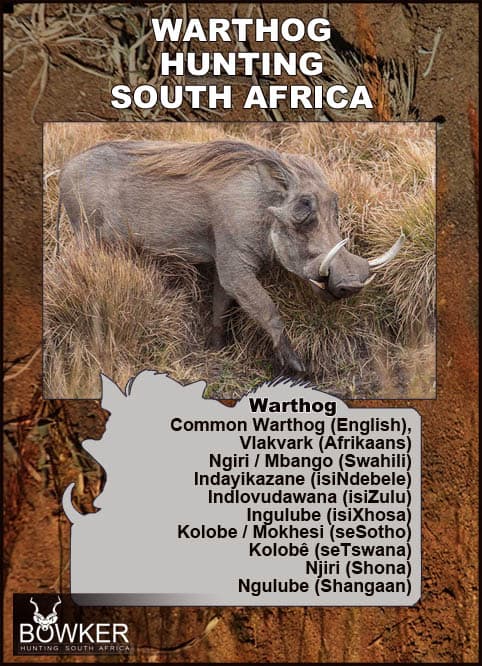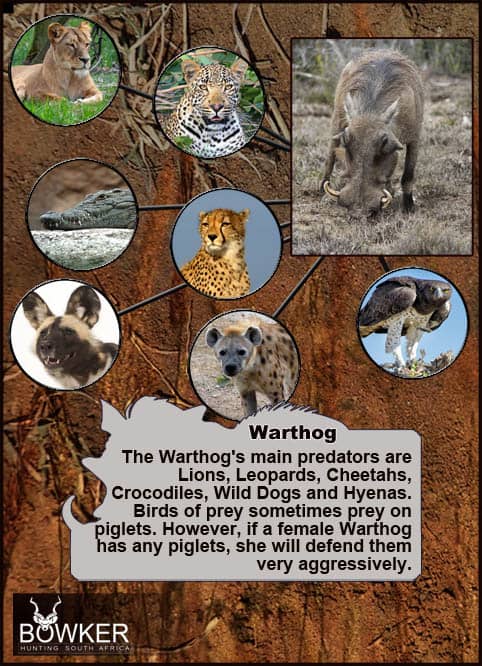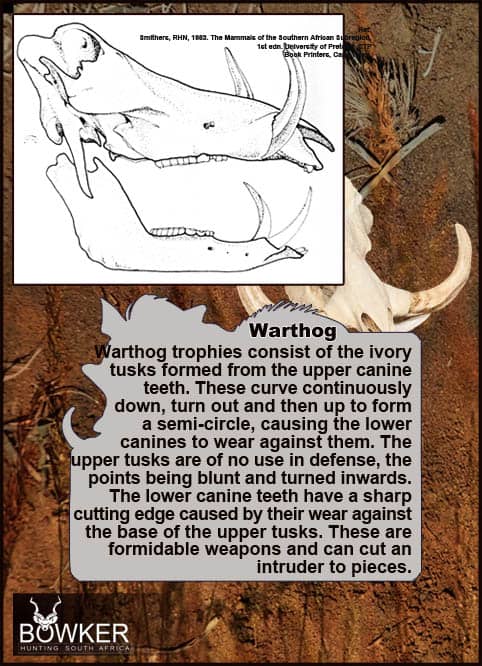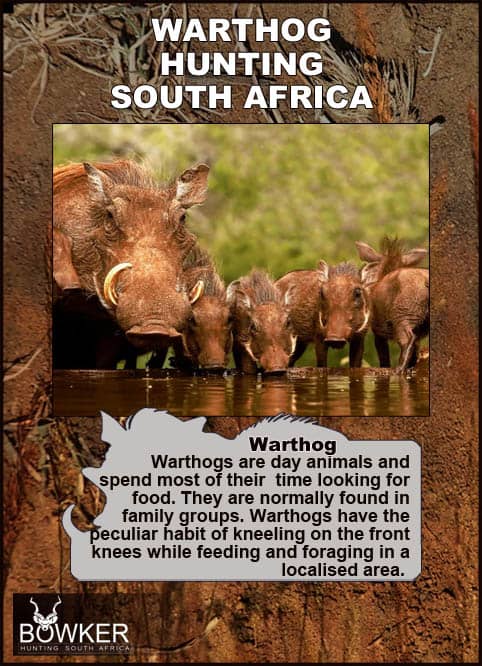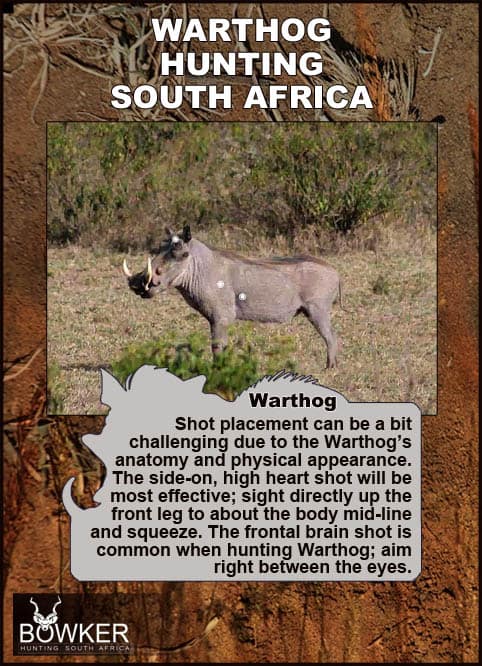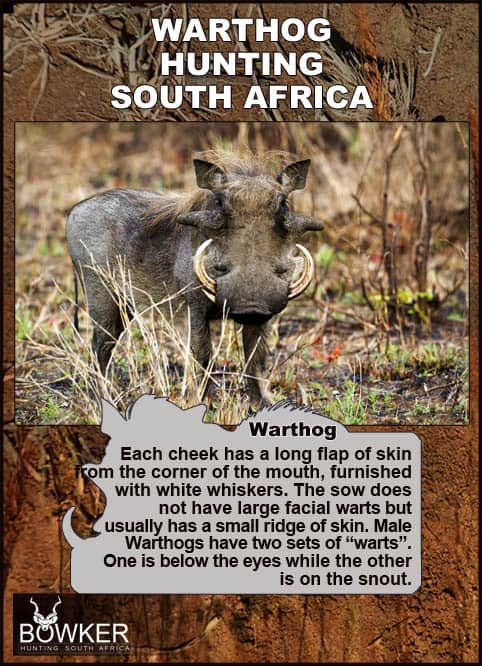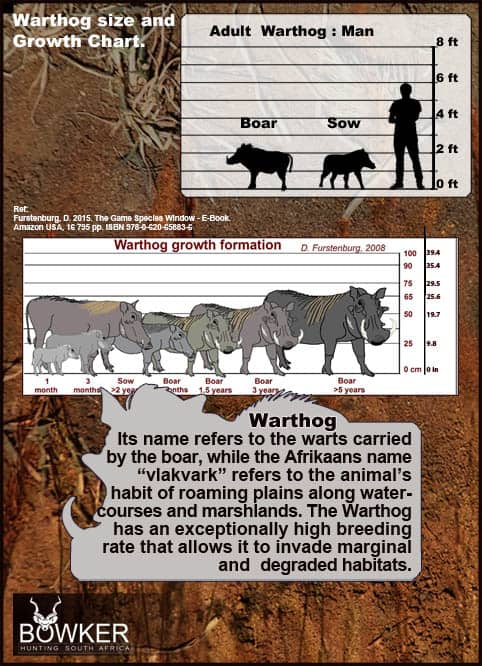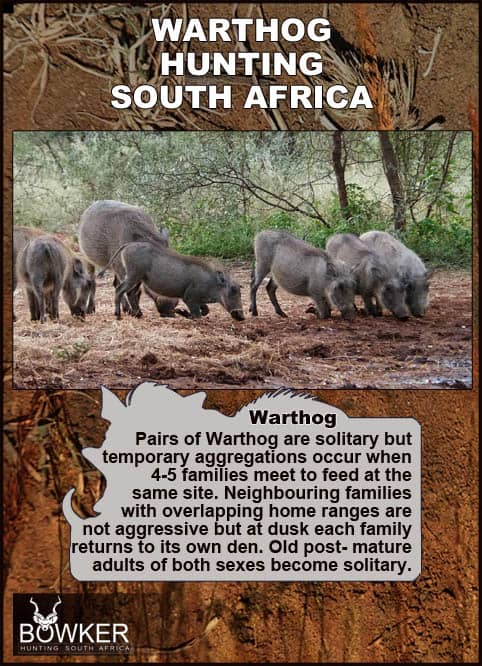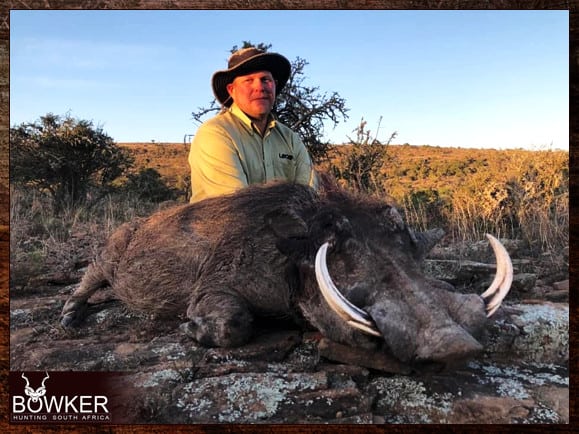
Summary
Warthog hunting makes for an excellent hunt; a big boar is not an everyday occurrence.
Boars are often double the size of sows in body weight, display two dominant warts on both sides of the head, and weigh 250 pounds.
There are no seasonal restrictions on hunting Warthogs in the Eastern Cape of South Africa.
Nick Bowker Hunting offers African Trophy Warthog year-round. The hunter to South Africa should always consider a big boar as a hunting option, and this animal can be added to any of our hunting packages.
Warthog hunts in South Africa are popular and a local favorite pastime.
Safaris are conducted from Hopewell Hunt Lodge in the Eastern Cape, South Africa.

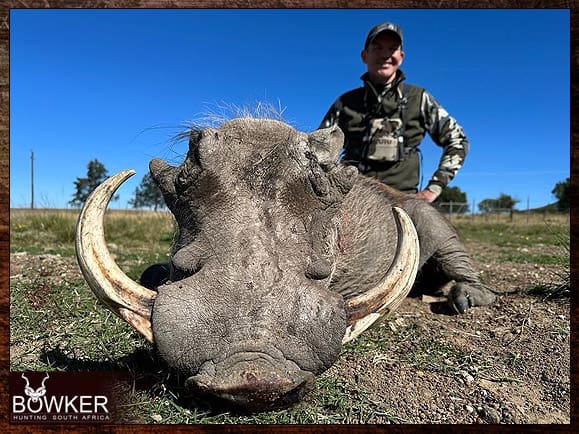
Table of Contents
Warthog Hunting Trophy Fees in South Africa – 2025
The average price for hunting a Warthog is $450. South African hunting packages often include a Warthog.
Our trophy fee for 2025 is $450.
All-Inclusive $5000 Starter African Safari Package for seven trophies and eight days hunting. (Inclusive of a Warthog)
- Gemsbok
- Impala
- Black Wildebeest safari hunt
- Springbok
- Blesbok safari hunt
- Warthog
- Mountain Reedbuck safari hunt
The African Warthog hunt package includes a licensed hunting guide, a hunting license, and all permits.
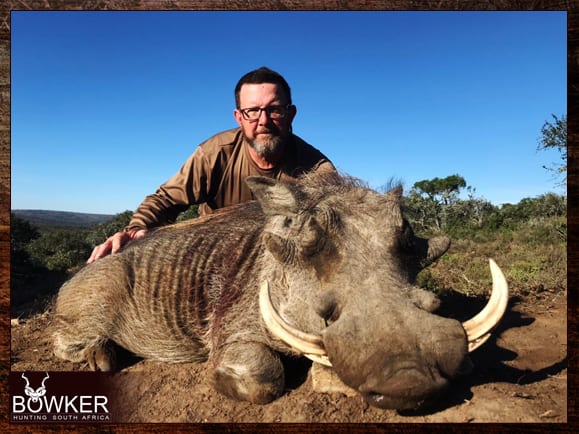
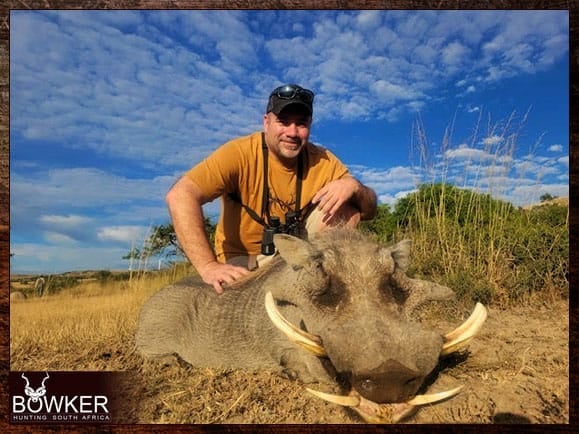
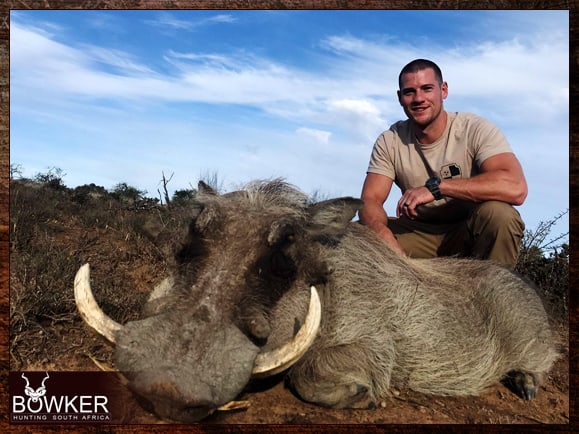
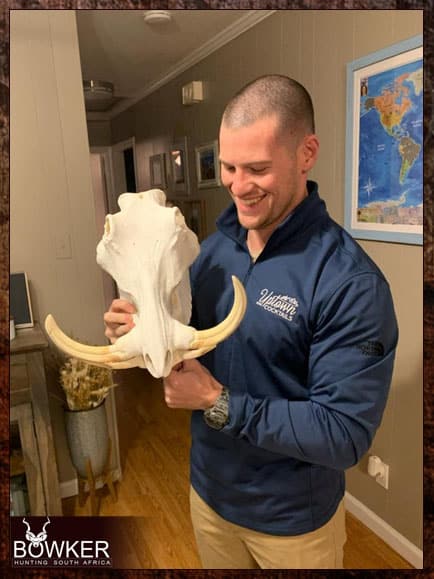
Hunting Warthog in South Africa

Shot placement must be in the bottom third of the animal directly above the front shoulder. This will ensure a heart or lung shot. Avoid head and neck shots, which are high-risk.
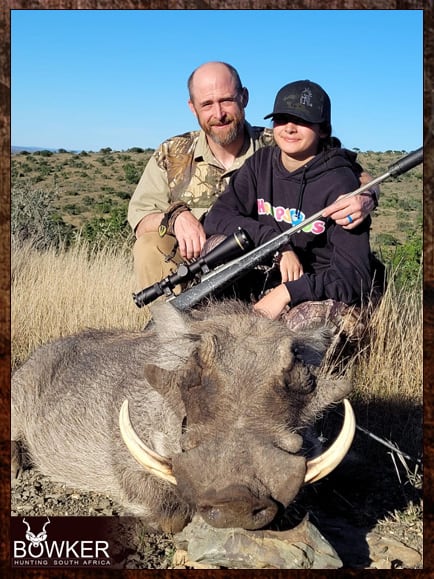
Your warthog boar trophy should have an average shoulder height of around 25 inches, weigh about 180 pounds, and have a Tusk Length of approximately 10 inches.
The Safari Club International minimum score for a warthog is 29. The trophy is measured by adding the length of each tusk and the circumference of the tusks.
Only the upper tusks are considered for the trophy measurement.
Warthogs in South Africa are great hunting, and a big boar is not an everyday occurrence.
Although the warthog is now one of the most widely spread animals in the Eastern Cape of South Africa, high-quality boars are still challenging to find.
Sheep and cattle fences are little or no impediment to freedom of movement when hunting. Warthog is found in all provinces, including Limpopo.
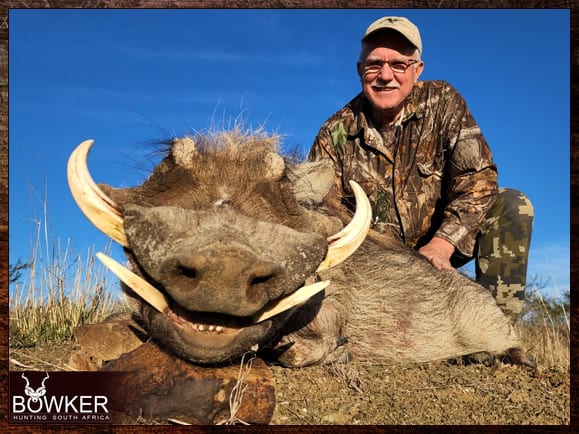
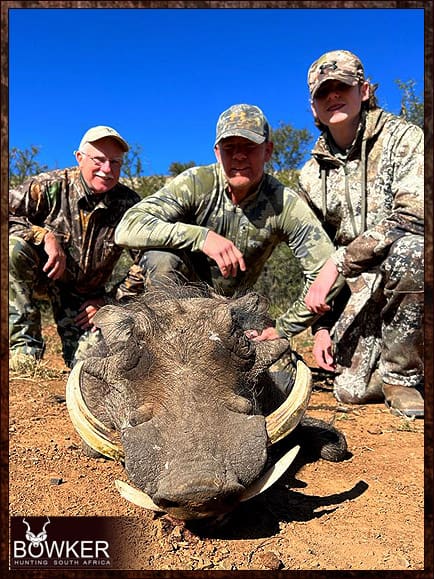
The goal for hunting warthog ranges from trophy tusks and hide to delicious meat. The adult boar, one of the most challenging African games, can weigh over 250 pounds.
They are not territorial, and he wanders all over the show. Big boars will not flee from dogs but rather turn and fight. The bottom tusks can be lethal for the dog. Hunting methods are mainly spot and stalk.
Warthogs are found in small family groups called “sounders,” where the mother and piglets stay together for up to three years. The boar will only join the group for mating.
A Warthogs’s favorite pastime is wallowing in the mud, which aids in skin protection.
Warthog is included in nearly all our big game hunting offers. They can be a real nuisance when hunting other species, such as eland, due to getting up in front of hunters during a stalk and spooking the intended quarry.
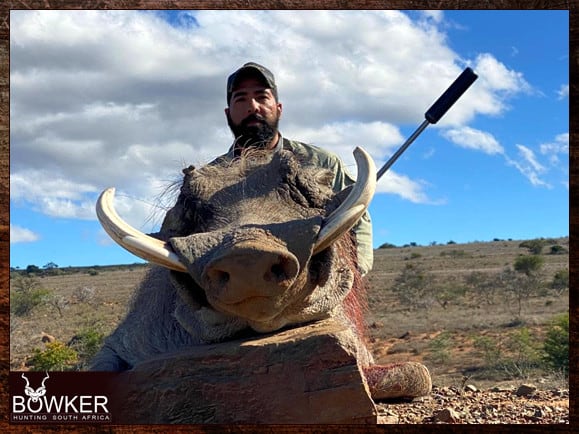
Trophy Judgement and Rifle Caliber for Warthog Hunts
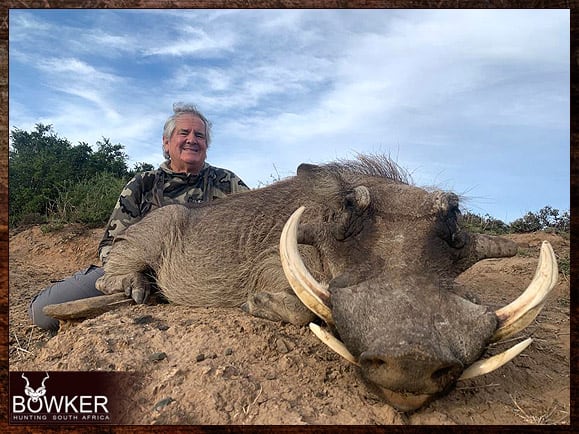
Hunt Warthog with 7 mm and 30 calibers works well for Warthog hunts. For those hunters who wish to avoid going through the red tape of bringing a rifle into South Africa, Nick Bowker has 300 Magnums fitted with suppressors.
Mounted on the rifles are Swarovski Z8 tactical scopes. Also, we have hand-loaded Hornady ELD-X ammunition.
The rifle, including ammunition, is free of charge as part of all South African hunting offers.
The warthogs’ natural skin color is gray but can appear reddish or yellow due to their constant mud bathing activities.
The snout is broader than a domestic pig’s, and long canine teeth (tusks) curl over the snout.
Tails are upright and erect when they are on the move.
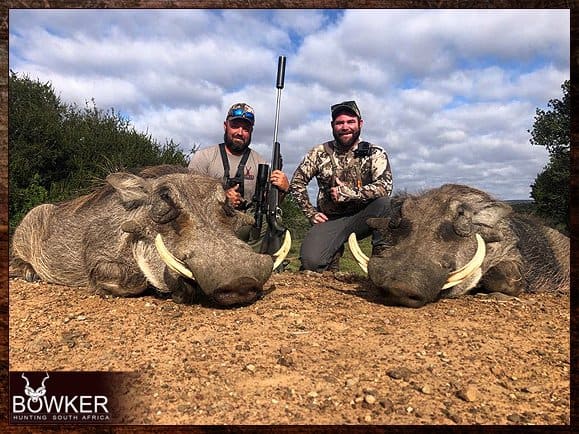
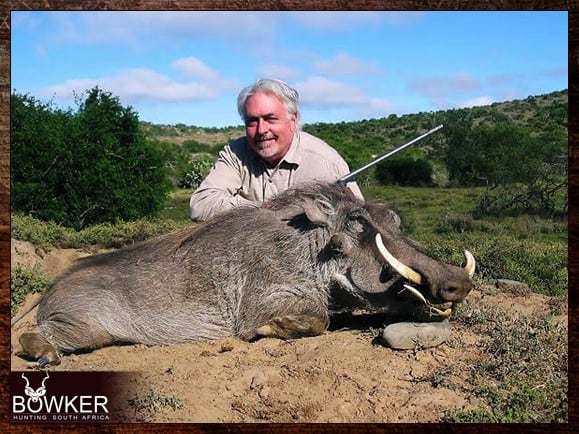
Always approach from downwind when game hunting Warthog. The Warthog has poor eyesight but a good sense of smell and hearing; thus, warthogs are often shot at close distances.
Boars are often double the size of sows in body weight, displaying two dominant warts on both sides of the head, while sows have much smaller warts.
Judging the trophy quality from a distance can be difficult as the tusks are not always easy to see.
Boars will display darkened skin below their eyes due to scent glands leaking a secretion that stains the skin, making boar identification more straightforward.
Consider at least 2-3 inches of tusk inside the lip while hunting. Warthogs occur in all provinces of South Africa and all types of terrain. Join us at our hunt lodge, Hopewell.
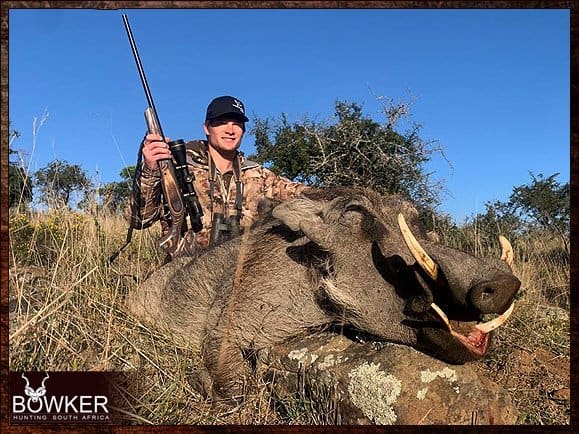
Difference Between a Male and Female
The male Warthog is more significant, with more prominent tusks, and has two sets of warts. In contrast, the female Warthog has one set of warts and invariably has a brood of young following her around.


Interesting Facts for Hunting
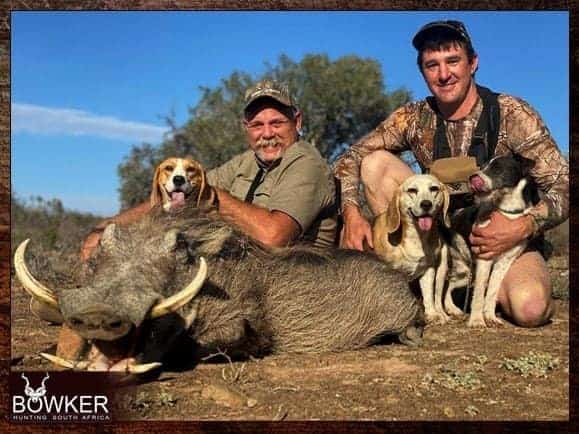
- Their name comes from the warts or protrusions on their face; these protrusions combine bone and cartilage. It protects their face when they fight.
- Warthog sleeps underground at night or in burrows when it is cold. Warthog and other animals like the steenbok take over these burrows from other animals, such as the aardvark or anteater in English.
- Warthogs mainly eat grass but dig for roots and bulbs, especially when dry. They also scavenge meat as they are omnivorous.
- They like to roll in the mud to protect their skin from the sun and parasites.
- Looking for Warthog around water is a good strategy.
- Surprisingly, warthog can live for up to 17 years of age.
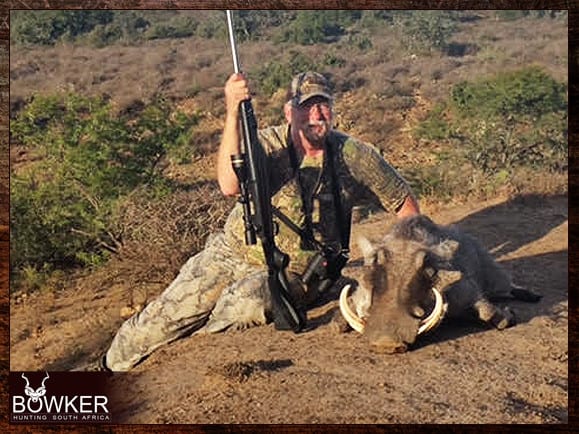
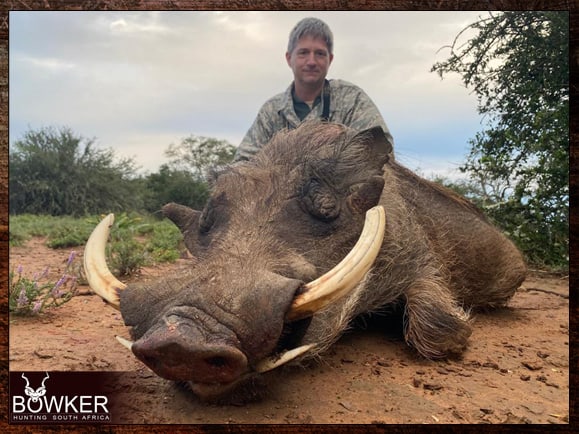
- These game animals have a litter of two to four piglets; however, their mortality rate is relatively high due to predators.
- Two or three female Warthogs sometimes form small sounders with their young to assist with looking after each other’s young piglets.
- Warthog let their young go into their burrows first, then back into the burrow themselves so they can protect them if any threat comes.
- They have tusks like elephants on their upper and lower jaws. Warthogs use these to fight and defend themselves against predators.
- When dry and the ground is hard, they can kneel on their writs and use their snouts and tusks to lift the soil to extract roots and bulbs.
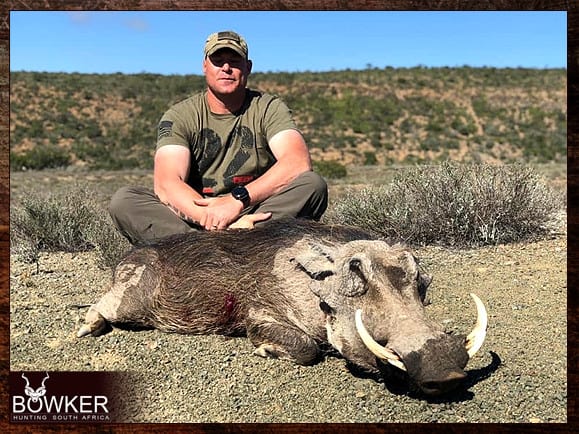
About the Warthog
Description of Warthog for your hunt
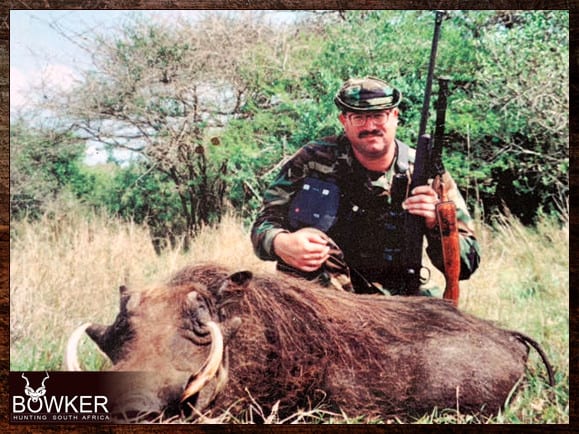
The Warthog is the only pig species adapted to grazing in savanna habitats.
Warthog has calloused pads that protect the wrists. These pads are from quite early in the fetus’s development. While feeding, they often kneel and move around on their wrists.
Although they can dig their burrows, they commonly occupy abandoned burrows of aardvarks and other animals. The Warthog reverses into burrows, ready to burst out and defend if necessary.
Warthogs love to wallow in mud to cope with high temperatures and protect themselves from biting flies and insects.
They also huddle together to share heat in low temperatures.
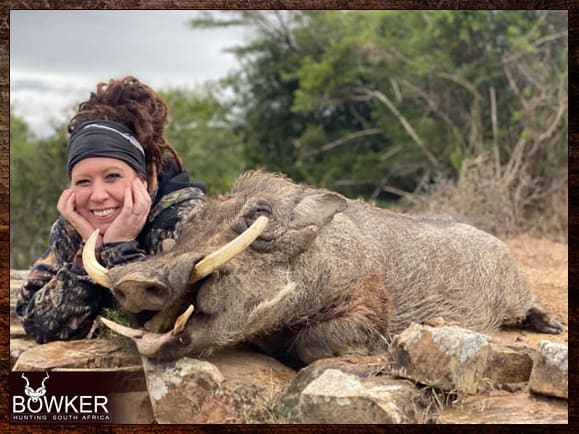
Information for hunting Warthogs
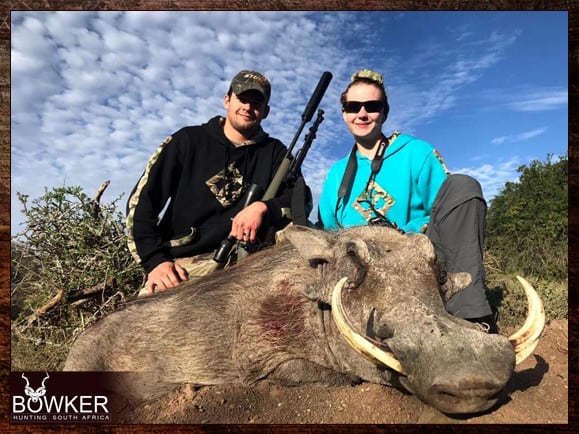
The Warthog is a medium-sized species, with shoulder height from 20 to 30 inches. At 100 to 150 pounds, females are typically slightly smaller and lighter than males, that weigh 130 to 250 pounds.
A warthog has two pairs of tusks protruding from the mouth and curving upwards. The shorter lower pair gets sharpened by friction against the upper pair when the Warthog is feeding.
The upper canine teeth can grow to 10 inches long and have a broad elliptical cross-section. A tusk will curve 90° or more from the root and will not lie flat on a table, as it bends somewhat backward as it grows.
In addition to finding food, the tusks are also used for defense against predators.
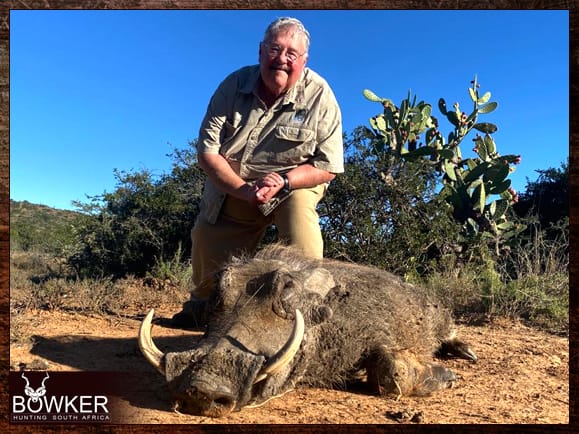
Frequently Asked Questions about a Warthog Hunt
How much does it cost to hunt a Warthog?
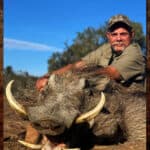
The trophy fee for a standalone Warthog hunt is between $400 and $600. Daily rates vary between $250 and $500 per day.
Included in the Warthog trophy fee is a licensed guide. As well as a hunting license and all permits.
A Warthog is often included in a plains game offer. Package prices vary from $ 3,000 to $10,000, depending on location and size. Packages include 5 – 7 trophy animals, accommodation, meals, and daily rates.
How to hunt a Warthog?

In the early mornings and late evenings, Warthog is spotted from an elevated vantage point in the thick brush and then stalked. Alternatively, hunters use ambush techniques at watering holes or as they move back to cover from feeding.
Where do you shoot a Warthog?

Shot placement must be in the bottom third of the animal directly above the front shoulder. This will ensure a heart or lung shot. Avoid head and neck shots, which are high-risk.
What is a trophy Warthog?
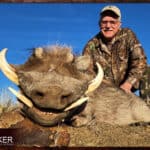
Warthog trophies have a Tusk Length of approximately 9 – 11 inches. The minimum qualification score under Safari Club International for a Warthog is 29. Add the length of each tusk and the circumference of the bases to get your SCI score.
How do you judge a Warthog trophy?
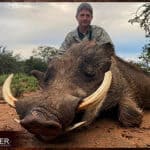
Boars will display darkened skin below their eyes due to scent glands leaking a secretion that stains the skin, making boar identification more straightforward.
On most occasions, one must always consider that there are at least 2-3 inches of tusk inside the lip.

Seasonal Restrictions
When can you hunt Warthog in South Africa?
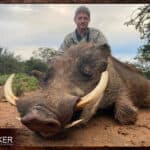
There are no seasonal restrictions on warthog hunting in the Eastern Cape of South Africa.
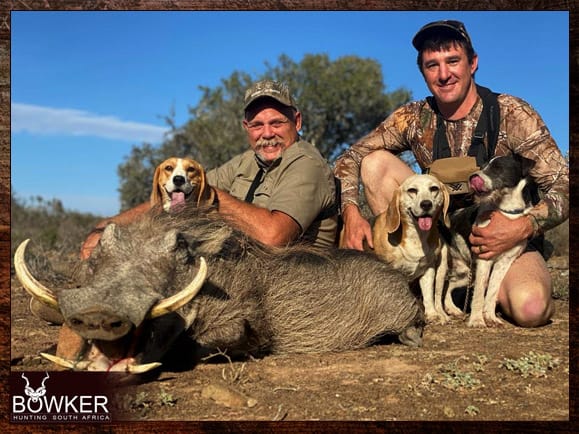
The Warthog in pictures
